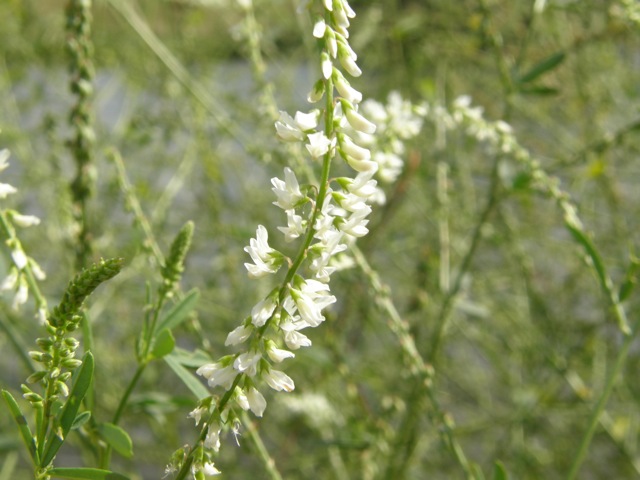Fabaceae, the pea, bean or legume family.
Description:
Plant:
Tall, branching plant, 2'-6', with clover-like leaves and elongated clusters
of small, white, pea-like flowers. Stems smooth. Annual(?)
Flowers:
White, pea-like, about 1/4" long, in long clusters (racemes) to 6".
Leaves:
Alternate, compound, three-parted, leaflets narrowly elliptical, sparsely toothed,
to 1".
Fruit:
Small, ovoid pod with spike on tip.
Blooming:
June-September
Habitat:
Fields, roadsides, waste areas
Comments:
This plant, and the related yellow sweet clover (M. officinalis)
are commonly grown in fields to enrich the soil.
The flowers are attractive to a wide variety of bees and other insects,
and an important source of nectar.
The crushed foliage has a pleasant aroma, characteristic of new-mown hay,
and extracts have been used in perfume.
This odor is due to the compound coumarin which occurs in the plant.
Certain molds can convert coumarin to dicoumerol, which is a potent
anticoagulant.
This fact was discovered in the 1920s by scientists investigating the
death of cattle that had eaten moldy silage containing sweet clover.
The discovery lead to the development of warfarin, used both as a
rodenticide, and medicinally to prevent clotting.
Where to find it:
Common in damper field areas and near the pond.
